In 1971, the Occupational Safety and Health Administration (OSHA) created an Outreach Training Program as a voluntary program with a purpose to promote workplace safety and health, as well as help workers become more knowledgeable about workplace hazards and their rights. Over the years OSHA has done well to expand the reach of the program and with this growth has increased training availability with their train-the-trainer format. In fact according to OSHA, between FY 2008 and FY 2013, more than 3.6 million workers were trained in job hazard recognition and avoidance through the program.
OSHA offers Outreach Training Programs for 4 industries: Construction, General Industry, Maritime, and Disaster Site work. For the sake of this article, we will be covering the construction and general industries. Although their class formats and even a few topics are similar, generally they cover a different set of topics and the atmosphere and scope is much different and taking one over the other can be unnecessary and a waste of time and money, depending on the industry you work in.
Why were these implemented?
The OSHA Outreach Training Program provides training on the recognition, avoidance, abatement, and prevention of workplace hazards. Outreach classes also provide overview information regarding OSHA, including workers’ rights, employer responsibilities, and how to file a complaint.
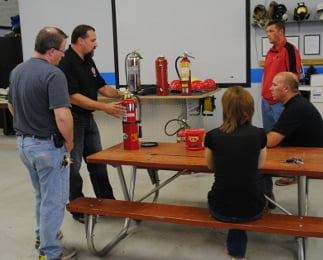 Why take one over another?
Why take one over another?
The 10 hour courses are designed and intended for entry or lower level workers, due to the nature of the material covered. It is a more simplistic approach and covers a smaller scope. The 30 hour courses are designed and intended for higher level workers, those with some safety responsibility, due to the larger scope and more topics included in the 30 hour course. Although it should be noted, that any worker would benefit from either 10 hour or 30 hour courses; however as stated earlier, a worker in the construction industry would not get a proper representation of their industry in the general industry course and vice versa.
What is the difference between the two?
As per OSHA.gov’s website: “The 10 hour course provides basic awareness training on the recognition, avoidance, abatement, and prevention of workplace hazards. The course also provides information regarding workers' rights, employer responsibilities, and filing a complaint.
The 30 hour course provides a greater depth and variety of training on an expanded list of topics associated with workplace hazards in each industry. OSHA provides authorized trainers procedures for each industry program on the topic outlines for each industry.”
The neat thing about these programs is that they are customizable to a company’s own wants and needs. For example, the 10 hour General Industry course covers the following mandatory topics:
- Introduction to OSHA
- Walking/Working Surfaces
- Exit Routes, Emergency Action Plans, Fire Prevention and Protection Plans
- Electrical Hazards
- Personal Protective Equipment
- Hazard Communication
With the following example topics being selective or optional and can be selected to best tailor to a specific company based on want/need:
- Hazardous Material Flammable/Combustible
- Machine Guarding
- Confined Space Entry Awareness
- Lock Out/Tag Out
The list becomes even longer when you look at a 30 hour OSHA course. It is a more detailed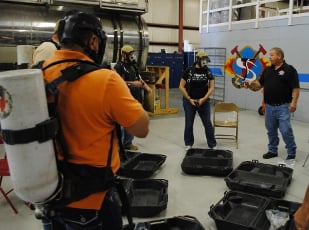 version of the previous topics and also includes Materials Handling in the mandatory topics, but adds 6 or so additional topics to be covered. The construction industry courses include even more additional topics for individual selection. The mandatory topics are different as well, tailored to include more construction specific topics, the most important difference is that of “Focus Four Hazards” which include: Fall Protection, Electrical, Struck By, and Caught in/Between.
version of the previous topics and also includes Materials Handling in the mandatory topics, but adds 6 or so additional topics to be covered. The construction industry courses include even more additional topics for individual selection. The mandatory topics are different as well, tailored to include more construction specific topics, the most important difference is that of “Focus Four Hazards” which include: Fall Protection, Electrical, Struck By, and Caught in/Between.
Can anyone take either class?
These courses are not designed to be exclusive to an age group. Everyone, of all ages, can benefit from OSHA courses. Especially the general industry as it covers a good number of general topics (as the name would imply) that can be used in any setting, even an office workplace or at home.
And again, you should be certain to verify which course (General Industry or Construction Industry) is a best fit for you when registering. At STS, we are happy to answer anyone's questions regarding this difference, as it important to attend the correct one for your industry. Find out more by contacting us!

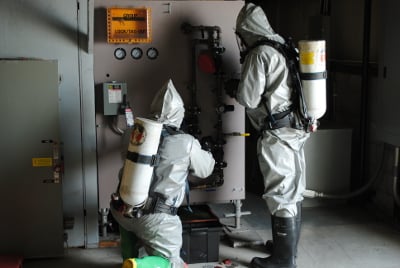 Are these classes required?
Are these classes required?
Short answer, no. They are a recommendation from OSHA as an orientation to occupational safety and health for workers. However, some states have enacted laws that mandate the training. Also, certain employers or organizations may require this training.
What are the benefits to me?
With the courses not being mandatory for all, what is the reason you should take these courses? Well, in a perfect world, one would hope you’d want to take these courses simply to establish a good safety values and attitude at your workplace. But the reality is often times not so. So below you will find a few valuable reasons to engage yourself or your staff into OSHA compliance safety training.
- It promotes good safety culture through peer training
- Training is intended to be participatory, using hands-on activities
- Trainers are able to tailor the training topics based on specific needs of their audience
- Outreach training content includes hazard recognition and avoidance, workers’ rights, employer responsibilities, and hot to file a complaint; it emphasizes the value of safety and health to workers, including young workers
- Outreach training is available in languages other than English (Spanish, Polish, etc.)
With the mindset you now have that OSHA outreach training is valuable training for any individual looking to stay safe in their workplace and promote a good safety culture, you may decide to sign up for yourself or others at your workplace. Safety Training Services, Inc. offers OSHA courses monthly, find out when the next available course is for you by clicking the PDF below.
If you are looking for any other safety-related course, click below to see what other courses are available!


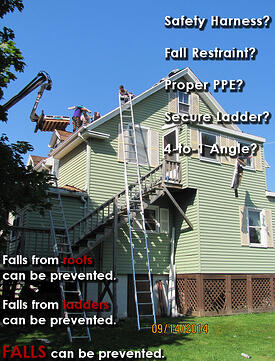

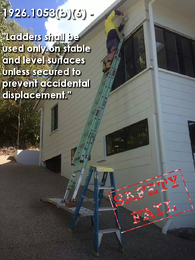

 As Americans we spend up to 90% of our time indoors and many of us spend much, if not most, of our working hours in an office environment. The Environmental Protection Agency (EPA) has conducted studies that show how indoor environments sometimes can have levels of pollutants that are actually higher than levels found outside.
As Americans we spend up to 90% of our time indoors and many of us spend much, if not most, of our working hours in an office environment. The Environmental Protection Agency (EPA) has conducted studies that show how indoor environments sometimes can have levels of pollutants that are actually higher than levels found outside. integrating three main strategies.
integrating three main strategies. Some pollutants can cause both short and long term health problems. For example, prolonged exposure to environmental tobacco smoke can cause lung cancer, and short term exposures can result in irritation and significant respiratory problems for some people, particularly young children.
Some pollutants can cause both short and long term health problems. For example, prolonged exposure to environmental tobacco smoke can cause lung cancer, and short term exposures can result in irritation and significant respiratory problems for some people, particularly young children.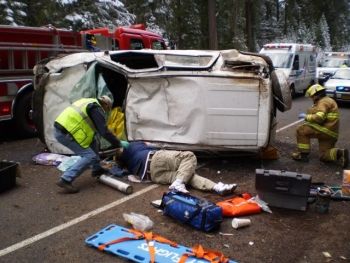 the lowest total since BLS began collecting this data more than 20 years ago.
the lowest total since BLS began collecting this data more than 20 years ago.
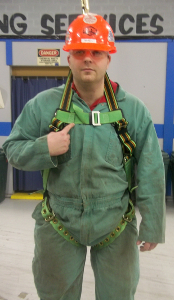
 disease (MND), Charcot disease, and many know it as Lou Gehrig’s disease (named after the famous baseball player from the 1920s and 30s who was forced to retire and died from ALS).
disease (MND), Charcot disease, and many know it as Lou Gehrig’s disease (named after the famous baseball player from the 1920s and 30s who was forced to retire and died from ALS).


 version of the previous topics and also includes Materials Handling in the mandatory topics, but adds 6 or so additional topics to be covered. The construction industry courses include even more additional topics for individual selection. The mandatory topics are different as well, tailored to include more construction specific topics, the most important difference is that of “Focus Four Hazards” which include:
version of the previous topics and also includes Materials Handling in the mandatory topics, but adds 6 or so additional topics to be covered. The construction industry courses include even more additional topics for individual selection. The mandatory topics are different as well, tailored to include more construction specific topics, the most important difference is that of “Focus Four Hazards” which include: 




 Review OSHA's Common Responsibilities (
Review OSHA's Common Responsibilities ( ‘If PPE is to be used to reduce the exposure of ICS/UC workers to hazards, a PPE program should be initialized and maintained. This program should contain identification and evaluation of hazards in the scene and if use of PPE is an appropriate control measure; if PPE is to be used, how it is selected, maintained and its use evaluated; training of workers using the PPE; and vigilance of the program to determine its effectiveness in preventing worker injury or illness. For more on PPE, see
‘If PPE is to be used to reduce the exposure of ICS/UC workers to hazards, a PPE program should be initialized and maintained. This program should contain identification and evaluation of hazards in the scene and if use of PPE is an appropriate control measure; if PPE is to be used, how it is selected, maintained and its use evaluated; training of workers using the PPE; and vigilance of the program to determine its effectiveness in preventing worker injury or illness. For more on PPE, see  Fireworks themselves are dated back to 7th century China, where they were invented and used in many festivities. Fast forward to mid-17th century; Europe was blown away by Chinese fireworks and the popularity would rise and they were used for celebration of many important events. Finally in the late 18th century, the early European settlers brought this love of fireworks to this country and used them as rally devices, political attractions, and of course to celebrate important events.
Fireworks themselves are dated back to 7th century China, where they were invented and used in many festivities. Fast forward to mid-17th century; Europe was blown away by Chinese fireworks and the popularity would rise and they were used for celebration of many important events. Finally in the late 18th century, the early European settlers brought this love of fireworks to this country and used them as rally devices, political attractions, and of course to celebrate important events.
 Keep any type of ladder or pole (used to set up or light fireworks) at least 10 feet from any power lines.
Keep any type of ladder or pole (used to set up or light fireworks) at least 10 feet from any power lines.
 rays. The color and how expense they were mean nothing compared to the REAL reason we wear sunglasses.
rays. The color and how expense they were mean nothing compared to the REAL reason we wear sunglasses. UV radiation is not limited to just us humans either. Both plants and other animals are affected by it. For example, a plant's overexposure to the sun could mean affecting its photosynthesis. This can affect the growth of the plant, and therefore can potentially impact the structure of an ecosystem in a negative way. Animals, especially those with little to no hair, can get sunburn just like any of us. This is why pigs (and other similar animals) roll around in the mud, they use it like sunscreen!
UV radiation is not limited to just us humans either. Both plants and other animals are affected by it. For example, a plant's overexposure to the sun could mean affecting its photosynthesis. This can affect the growth of the plant, and therefore can potentially impact the structure of an ecosystem in a negative way. Animals, especially those with little to no hair, can get sunburn just like any of us. This is why pigs (and other similar animals) roll around in the mud, they use it like sunscreen!